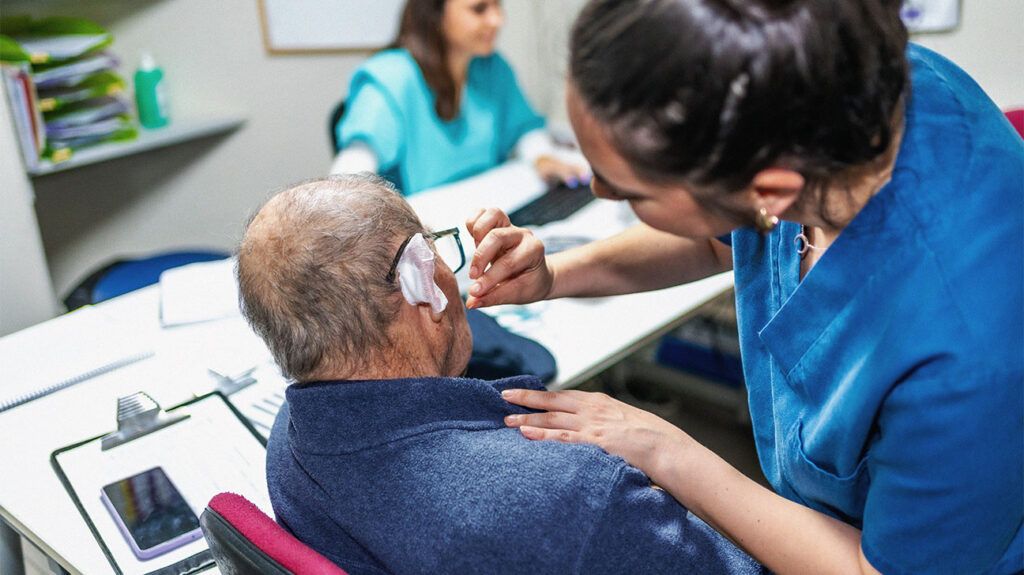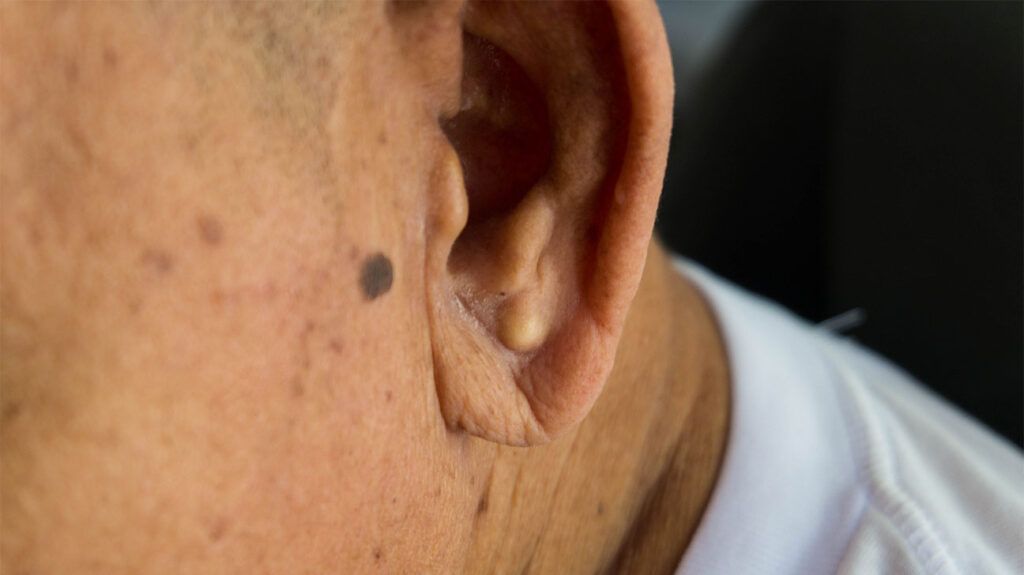What causes a cyst in your earlobe?
Cysts are lumps that can affect the earlobe when skin cells form in the innermost layer of the skin instead of shedding. These are epidermoid cysts. In rare cases, they can become cancerous.
Earlobe cysts, otherwise known as epidermoid cysts or epidermal inclusion cysts, grow slowly. A doctor recommends removal only if there is pain, discomfort, bursting, or infection.
Cysts commonly form in adults in areas without heavy hair coverage, such as on the face, neck, or trunk.
Here, we discuss what to expect when discovering an earlobe cyst, including symptoms and treatment.
Watch Video:👇👇👇

A cyst is a sac-like tissue pocket containing fluid, air, or another substance.
When skin cells multiply or grow instead of shedding, they can form cysts within the innermost layer of the skin. These epidermoid cysts can also form if the outermost layer of a hair follicle becomes irritated or injured.
Males have a higher risk of developing these cysts, but anyone at any age can have them. Factors that increase the likelihood of a person developing an epidermoid cyst include:
- Age: Factors include being past the age of puberty.
- Genetics: Factors include having a specific genetic condition, such as Gardner syndrome, in which tumors and polyps develop in and around the colon.
- Injury: Factors include sustaining an injury to the skin or having a history of acne.
Cancerous cells rarely develop within epidermoid cysts. However, some cancers have a stronger link to these cysts than others. They include:
- basal cell carcinoma
- Bowen’s disease
- squamous cell carcinoma
- mycosis fungoides
- melanoma in situ
A note about sex and gender
Sex and gender exist on spectrums. This article will use the terms “male,” “female,” or both to refer to sex assigned at birth. Click here to learn more.

The following are some symptoms relating to an epidermal cyst on the earlobe:
- a small, flesh-colored bump under the earlobe’s skin
- a cyst that is firm and round
- a cyst that may or may not have a central plug, which looks like a blackhead
- drainage of keratin, a thick, cheese-like substance that can have a foul odor
At times, an earlobe cyst can become infected and require medical attention. Signs of an infection may include:
- redness or discoloration and inflammation of the area
- swelling and tenderness or pain
- a boil-like infection from a burst cyst
Doctors usually diagnose epidermal earlobe cysts by examination, and these do not require treatment.
Sometimes, a doctor will take a cyst sample in a procedure known as a biopsy and examine the sample under a microscope.
When necessary, treatment usually involves removing the cyst with a simple cut and local anesthetic. Surgical removal may also prevent a cyst from reforming.
Otherwise, a doctor can make a small cut in the cyst and drain the contents. This option is quick and simple, but cysts are more likely to return.
A doctor may recommend antibiotics in the event of infection. They may also inject a steroid into the cyst to reduce inflammation.
While a person cannot prevent earlobe cysts, they can manage them at home without signs of infection.
However, individuals need to avoid squeezing a cyst, as this can cause scarring and lead to infection.
A person may want to place a warm compress over the cyst to promote drainage and healing.
Earlobe cysts are usually not a cause for concern. However, certain complications may require medical intervention.
These complications may include:
- inflammation and infection
- bursting of the cyst
- skin cancer, although this is rare
How do you get rid of a cyst on your earlobe?
In most cases, a cyst on your earlobe may not need treatment. However, if a person wishes to remove it, a doctor can surgically drain or remove it.
Why is there a hard ball in my earlobe?
This is most likely a cyst. They are hard because they are filled with keratin and are usually harmless. A doctor can drain or remove them if necessary.
Can earrings cause earlobe cysts?
If a person wears earrings that cause damage to the earlobe, it may result in epidermoid cysts.
What causes epidermoid cysts in the earlobe?
Causes include age, injury to the skin, and genetics.
Earlobe cysts are usually benign and tend to form in middle-aged adults.
Cysts can occasionally be a symptom of a genetic abnormality. People, particularly those with a history of Gardner syndrome or another genetic condition, may want to speak with a doctor about the appearance of a cyst.
Medical treatment is not necessary to treat most earlobe cysts. Some may even go away on their own.
However, if a person suspects a cyst has burst or has an infection, it is important to seek medical attention.


